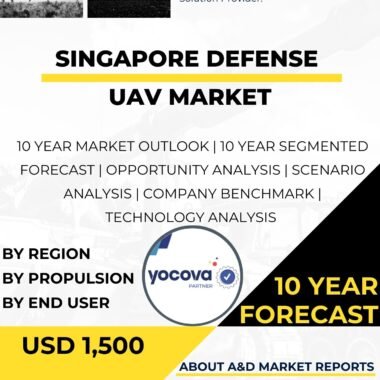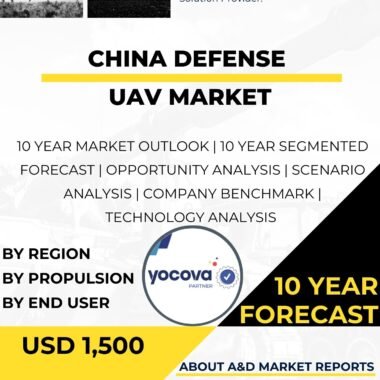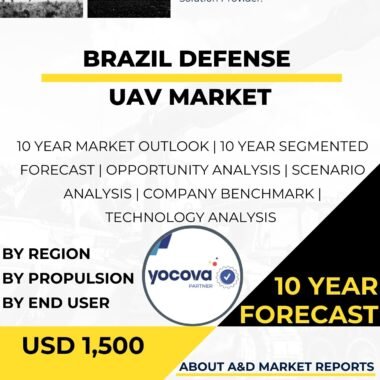Description
France’s Defense Unmanned Aerial Vehicle (UAV) Program is a crucial component of its modern military strategy, providing a wide range of capabilities to support intelligence, surveillance, reconnaissance, and combat operations. UAVs, also known as drones, have become an indispensable asset in contemporary warfare, allowing the French armed forces to gather critical information, monitor potential threats, and conduct precision strikes with reduced risk to personnel. France has invested significantly in developing and deploying various UAV platforms, each tailored to specific operational requirements and roles.
One of the key UAV systems employed by the French military is the General Atomics MQ-9 Reaper. The Reaper is a versatile medium-altitude, long-endurance (MALE) UAV capable of conducting a variety of missions, including intelligence gathering, surveillance, and reconnaissance. It is equipped with advanced sensors, including synthetic aperture radar (SAR), electro-optical/infrared (EO/IR) cameras, and signals intelligence (SIGINT) equipment. The MQ-9’s long endurance and range enable it to operate over extended distances, providing persistent coverage and valuable data for military decision-making.
For tactical and reconnaissance missions at lower altitudes, the French military relies on the Sagem Patroller UAV. The Patroller is a medium-altitude, long-endurance (MALE) UAV designed for intelligence, surveillance, target acquisition, and reconnaissance (ISTAR) tasks. It features a sophisticated sensor suite, including high-resolution electro-optical and infrared cameras, as well as laser rangefinders, to accurately identify and track targets. The Patroller’s adaptability and real-time data transmission capabilities make it a valuable asset for ground forces during operations.
France has also developed its own indigenous UAV systems, such as the Dassault Aviation-developed nEUROn. The nEUROn is a stealthy, combat-capable UAV designed to demonstrate advanced technologies and support the development of future combat drones. This experimental platform facilitates the testing of cutting-edge features, including low-observability characteristics and autonomous flight capabilities, which can be incorporated into future UAV programs.
In addition to surveillance and reconnaissance, UAVs are increasingly being used to support combat operations. The French military utilizes armed UAVs, such as the MQ-9 Reaper equipped with precision-guided munitions, to conduct targeted strikes against high-value enemy assets while minimizing collateral damage. This capability provides France with a significant advantage in conducting counterterrorism operations and engaging hostile forces with reduced risk to its own troops.
In the maritime domain, the French Navy employs the EADS Harfang UAV for maritime surveillance and anti-submarine warfare missions. The Harfang, based on the Heron UAV, is equipped with maritime radar and sensors to detect and track surface vessels and submarines, enhancing the Navy’s maritime situational awareness and security.
UAVs have also proven invaluable in supporting French forces during overseas deployments and international peacekeeping missions. Their ability to conduct persistent aerial surveillance and provide real-time intelligence enhances force protection and enables more effective mission planning and execution.
France is actively investing in research and development to advance its UAV capabilities further. This includes exploring the use of swarming technologies, where multiple UAVs operate collaboratively to achieve shared objectives, as well as developing smaller and more agile UAVs for specialized missions in complex environments.
The successful integration of UAVs into France’s defense strategy relies not only on advanced technology but also on the training and expertise of its personnel. The French military emphasizes the proper education and skill development of UAV operators and maintenance crews to ensure the optimal use and reliability of these systems.
However, like any advanced technology, UAVs also present challenges and concerns. France, like other nations, is mindful of the potential risks associated with UAV operations, including cybersecurity threats and the need to adhere to international laws and regulations governing the use of unmanned systems in warfare.
In conclusion, France’s Defense UAV Program has evolved into a robust and diverse ecosystem of aerial platforms, offering critical intelligence, surveillance, reconnaissance, and combat capabilities to the nation’s armed forces. From long-endurance, high-altitude platforms like the MQ-9 Reaper to indigenous experimental platforms like the nEUROn, France has demonstrated its commitment to leveraging UAV technology to enhance its military readiness and effectiveness. As technology continues to advance, France will likely continue to invest in UAV research, development, and integration, ensuring that it remains at the forefront of unmanned aerial warfare capabilities.




